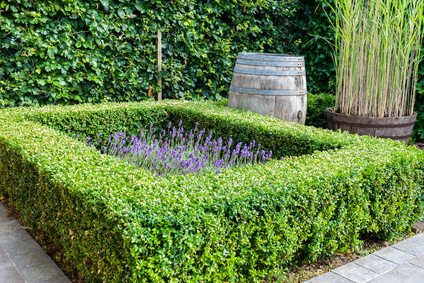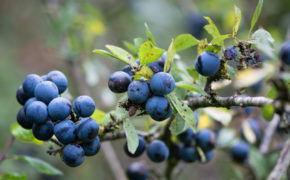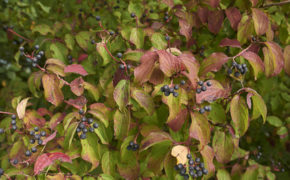
Get a quick no obligation quote It’s free and will only take a jiffy!
When Should I Prune my Common Box Tree?
Expert insight into the best time to prune a common box tree; why common box tree pruning is important, and how to identify common box tree diseases.
Common box is a large, evergreen shrub that is native to the UK. It is found mainly in the south of the country around Box Hill in Surrey and across the North Downs, the Chilterns and the Cotswolds. It’s a slow growing tree, known by the Latin name of Buxus sempervirens, and is commonly used as hedging and for topiary.
This tree will grow to heights of 5 metres although left unpruned it will sometimes reach 12 metres in height. With its glossy, leathery leaves and small, yellow-green flowers, it is quite distinctive and will live for several hundred years.
Why prune a common box?
As the common box is generally employed as a hedging shrub, pruning is primarily carried out to maintain the shape and aesthetic appeal of the tree. Because it is slow-growing, the common box won’t tend to need anything other than periodical tidying up, although it is good practice to remove any unhealthy shoots as they appear in mid-spring.
The common box, like any tree or shrub, will also benefit from regular removal of dead wood or diseased or decaying branches. This shrub is prone to a large number of pests and diseases, so it is doubly important to be vigilant and take action to prune out any problems as they are detected.
When is the best time for common box tree pruning?
It is generally advised to prune evergreen shrubs just before their growth cycle commences in mid-spring so that any risk of frost is well out of the way and cannot harm new shoots. This timing will also mean that pruning scars are concealed by new growth, which enhances the appearance of the plant.
If the box tree is still flowering or about to flower by mid-spring, pruning can be delayed until immediately after the flowering has finished.
If your box tree is used to form a hedge or topiary and you are looking to encourage bushy growth, a young plant can be cut back by up to a third in May. The common box can withstand hard pruning and will grow back from bare wood. This means that an unruly hedge can be cut right back to the central stem or trunk quite safely. Whilst it will not look very appealing at first, it will encourage the sprouting of fresh shoots. Give them a year or so and they will be ready for trimming. Do this in May for best results.
The best time to trim back mature hedges and topiary is August. Whist in theory you can prune towards the end of May, doing so may result in leaving the new growth prone to weather damage including leaf scorch and diseases such as box blight. Leaving the pruning until August when the new growth has hardened should assist in minimising leaf damage and it will keep the hedge nice and neat during the winter.
Any diseased or damaged branches should be removed as soon as they are detected for the sake of the plant’s health.
What to look for during common box tree pruning
Box blight as already mentioned is a fungal disease that causes bare patches in box trees together with dieback. This is particularly prevalent in topiary. Look out for brown leaves and bare patches, especially following wet weather.
Additionally, box sucker is a known issue. Whilst it is not considered a serious risk to the plant’s health, it will affect the appearance. Look out for cupped leaves at the shoot tip and, in late spring, flattened pale green insects plus a white waxy substance.
The box red spider mite and mussel scale can also be frequently occurring problems for the common box. Lighter infestations of mussel scale are not too problematic, however heavy attacks will affect the plant’s growth. Look out for brownish black scales encrusted across the bark which take on the appearance of mussels. In more serious cases, stems may suffer from dieback.
Tree Preservation Orders
Never proceed with any tree work until you are absolutely sure that there is no Tree Preservation Order (TPO) applicable. If there is, you must obtain permission before going ahead, and this can take up to eight weeks to come through. What’s more, if the tree is sited in a conservation area, permission must be gained before going ahead with works of any kind.
The importance of common box tree pruning expertise
A neat and tidy hedge and well-crafted topiary say a thousand words. Checking for signs of the numerous diseases typical of the common box, and knowing how to deal with them swiftly and effectively, is essential if you are going to maintain the beauty of your plant and its surroundings. Sometimes, the best way to do this is by engaging professional assistance, particularly if your common box has grown to quite a height and needs a safety conscious approach.
If you have a common box tree on your land or in your garden that you’d like to keep healthy and looking beautiful, then you should call in specialist assistance from a tree surgeon. Always be sure to check that your chosen tree surgeon is able to provide official certificates and checkable references and, whenever possible, use a Trading Standards approved tree surgeon for a guarantee of quality and value for money.
If you have a common box tree that needs pruning, why not get in touch with T.H. Tree Services? As fully qualified and vastly experienced Trading Standards and local authority approved tree surgeons, we are able to offer specialist expertise across all aspects of common box tree pruning. For a free, no-obligation quotation, contact our helpful experts on 01268 642814 or get in touch here.
Had a fallen tree in the early hours of Monday morning, called for quote and the team had it cleared on the same day. Really good communication when the lads were onsite and did a great job. Lots of pride in their work shown with the thorough clear up. Would thoroughly recommend.
Thank you Stuart for your kind review. We were glad to be able to help you with your fallen tree. If there's anything else you need in the future, please don't hesitate to get in touch.








